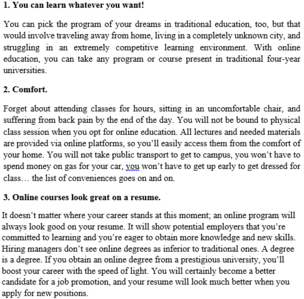Read the following passage and mark the letter A, B, C, or D on your answer sheet to indicate the correct answer to each of the questions from 35 to 42. Non-verbal communication is a wordless form of communication. It is mainly a silent form of communication that does not involve speech or words. Non-verbal communication is done through eye contact, hand movement, touch, facial expressions, bodily postures and non-lexical components, etc. At times, silence is said to the best form of...
Đọc tiếp
Read the following passage and mark the letter A, B, C, or D on your answer sheet to indicate the correct answer to each of the questions from 35 to 42.
Non-verbal communication is a wordless form of communication. It is mainly a silent form of communication that does not involve speech or words. Non-verbal communication is done through eye contact, hand movement, touch, facial expressions, bodily postures and non-lexical components, etc. At times, silence is said to the best form of non-verbal communication.
One example of non-verbal communication is dancing. When we dance, we can express so many different emotions. From passion to religious devotion, dancing either alone, writh another person as part of a couple or in a synchronized group, can communicate so much. Dancing is something that many of us engage in from childhood and it becomes an important way of socializing and expressing ourselves at the same time.
Body language including bodily movement and postures is a language all of its own. Our posture, and the way that we lean forward or back or cross or uncross our legs can speak volumes about us. Very often, we are not even aware that we are communication our thoughts via our body language. That is the reason why, in job interviews and other situations in which we are under scrutiny, it is a good idea to pay attention to our body language. For example, leaning forward can be a sign of positivity, whilst sitting with our arms folded can make us look closed off - as if we have something to hide.
What we wear can often communicate things. For example, if we dress up in academic robes, it is clear that we want to communicate to everyone who sees us that we have attained a certain level of academic achievement. We should never judge people by what they wear - however, some types of official garments (such as a judge’s wig, a scholar’s gown or a soldier’s medal) are designed to communicate something about the wearer.
Silence is also a type of non-verbal communication. Sometimes, staying silent can communicate much more than words can. Silence can be powerful, sad, happy or it can simply communicate to other people that we do not want to engage with them. Good communicators are able to listen, and to use comfortable silences, to connect with other people. There is no need to think that communication is all about words!
Effective communication, as is abundantly clear from the discussion above, involves not just listening to other people’s words and expressing ourselves in words. It also means picking up on other people’s non-verbal cues. Why not go through the list above and think about which forms of non-verbal communication you are adept at understanding. Are there any ways in which you might improve your non-verbal communication skills? We could all benefit from a little improvement in this area, as it enables us to enjoy deeper and more meaningful connections with other people.
(Source: http://www.importantindia.com)Which of the following can be inferred from the passage?
A. Body language is the most useful form of communication.
B. When people cannot speak, they can use non-verbal communication
C. It’s impossible to think that communication is all about words.
D. Communication is done through not only words but also non-verbal cues.

